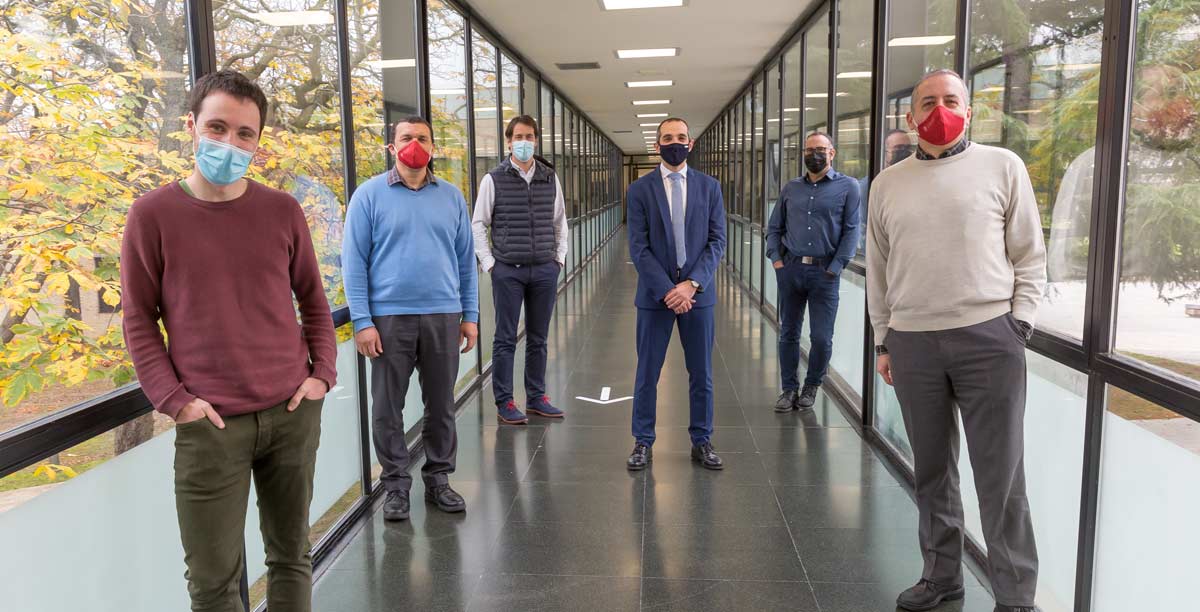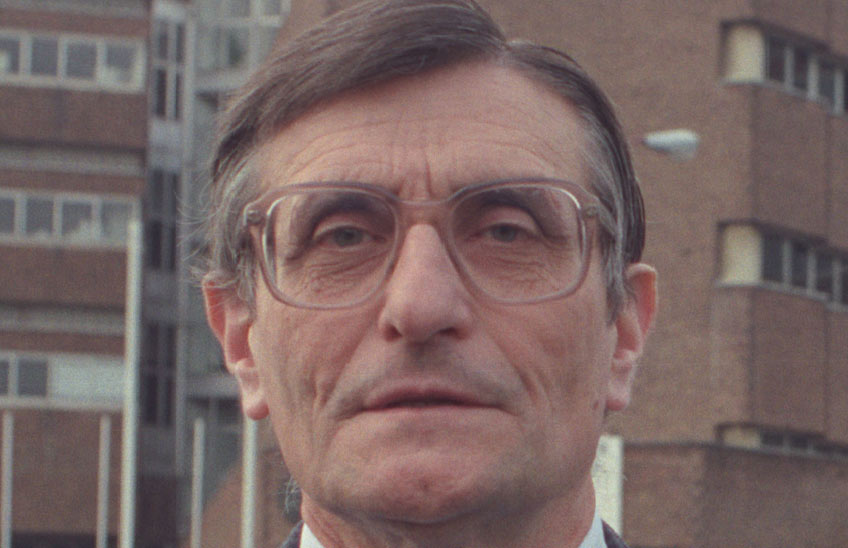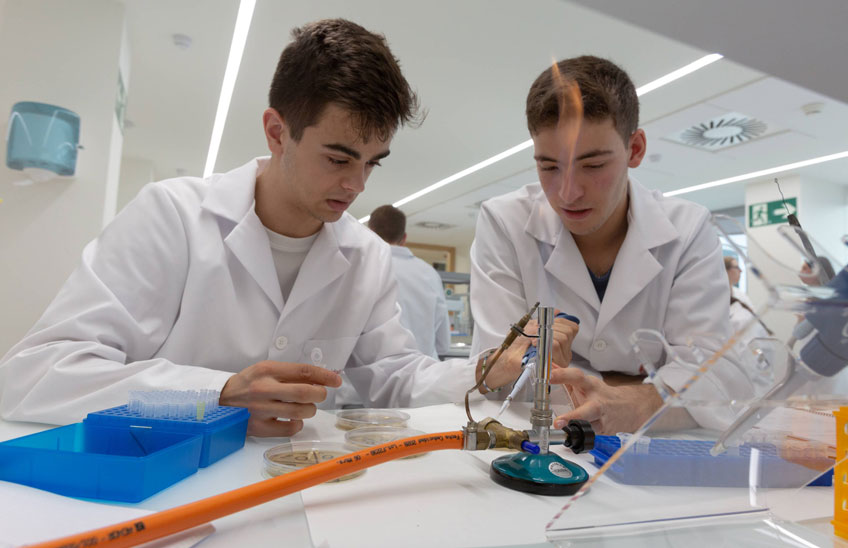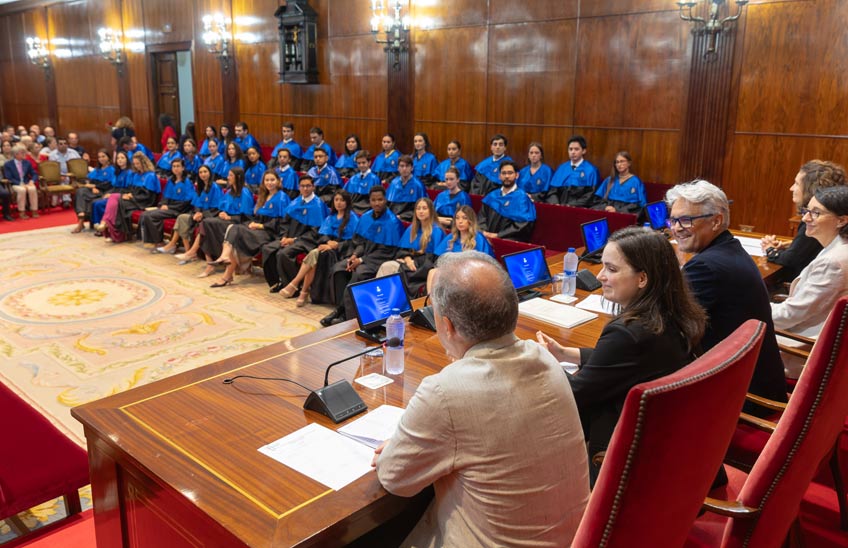A University experiment demonstrates the difficulty of ensuring social distancing in situations of mobility
According to the study, it is difficult to maintain 1.5 meters between people moving in spaces such as shopping malls or large shopping centers.

FotoManuel Castells/<br>De izquierda a derecha: Iñaki Echeverría; Raúl Cruz; Iker Zuriguel; César Martín; Luis Fernando Urrea; Ángel Garcimartín.
19 | 01 | 2021
An experiment at the University of Navarra has shown that it is very difficult to guarantee social distancing in situations of mobility. More than forty volunteers participated in a study coordinated by the department of Physics and Applied Mathematics of the School of Sciences together with the School of Architecture academic center. The work has been published in the scientific journal Scientific Reports.
The experiment aimed to find out whether it is possible to maintain social distancing within a moving crowd. Volunteers participated under two conditions: walking in a 75 m2 enclosure Closed ; and the prior knowledge that they had to try to maintain social distance.
"Our results show that, when we move, we are not able to maintain the imposed safety distance, even in conditions of very dense leave and in which our only purpose is to maintain that distance," says Iñaki Echeverría, PhD student of the School of Sciences of the University of Navarra and researcher principal of this study.
Avoid crowded places
The publication of the results of this research coincides with the implementation of new restrictions in view of the arrival of the third wave of the pandemic. Some of them refer to the capacity in shopping centers and department stores. "The study shows that compliance with social distancing in these spaces is often physically impossible, due to the limitations of both space and density, and, therefore, it is better to avoid them".
The work suggests that, to guarantee the minimum distance of one and a half meters, the density should not exceed 0.16 people per square meter (6 m2 per person). "Based on Spanish regulations, the capacity of shopping centers under normal conditions is 0.5 persons per square meter. At the height of the pandemic (April and May of last year), due to capacity reductions, densities dropped to 0.17 persons per square meter," the researchers add.
Another conclusion drawn from the University of Navarra study is related to pedestrian speed. "In the experiment it was observed that walking fast makes the issue of times in which social distancing is violated is higher. On the other hand, the time it takes to resolve these conflicts (to return to a status where the distance to the nearest pedestrian is safe) is shorter. Thus, it is not entirely clear what is best to avoid non-compliance with the rule", he adds.
For Iñaki Echeverría, this research could continue with the analysis of more realistic situations that occur in our daily lives: crowds in streets, shopping malls and other places where it is difficult to maintain the social distance recommended by health authorities. "Simplifying reality through the study of a small, controlled experiment can help us to create first approximations to establish density restrictions in urban spaces based on scientific evidence."
......................
Echeverría-Huarte, I., Garcimartín, A., Hidalgo, R.C. et al. Estimating density limits for walking pedestrians keeping a safe interpersonal distancing. Sci Rep 11, 1534 (2021). https://doi.org/10.1038/



